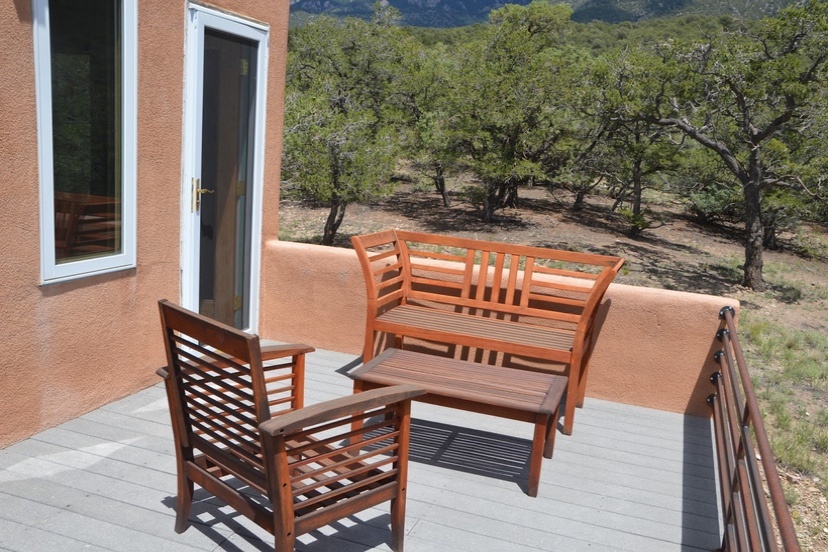We concluded Part One, on Friday, noting some proposed updates to the Archuleta County Land Use Regulations were discussed by the County commissioners at a May 14 work session. Some of the proposed updates concern STRs (Short-Term Rentals; vacation rentals).
I mentioned that one of the issues addressed was a lack of clarity about who is actually operating the STR, who is responsible for problems, and who has the authority to make decisions. Some STRs are operated by the actual property owner, but many are operated by property managers — and in some cases, the required “emergency contact” is a third party. The proposed rules try to ensure that the Community Development Department has the names and contact info for all three parties.
The modern vacation rental is an unusual type of lodging, historically speaking… in the sense that most of the STRs in Archuleta County are owned by people who live somewhere else. Often, these homes serve as “second-homes” for the owners, who visit at certain times of the year, and are rented out as vacation rentals for the rest of the year, instead of simply sitting vacant (as was more typical 20 years ago.) But unlike other forms of lodging, a vacation rental does not typically provide any on-site supervision, services, or management the way a motel or hotel provides.
The STR owner allows the renter to use the house without supervision. A curious arrangement, considering that the owner typically has never met the renter, and must rely on the “reviews” posted on the STR rental platform. (Airbnb, VRBO, HomeAway, etc.)
Curious in the sense that we don’t often hand over the use and care of $500,000 investment to a complete stranger.
Nor is it normal for a local government to allow multiple commercial businesses to operate in a neighborhood zoned as “residential.”
I also mentioned, in Part One, that the County has not yet provided the public with a map or list showing the addresses of properly licensed vacation rentals. Many communities in Colorado now provide that information on their websites, so that neighbors can confirm that a nearby home is actually licensed and is meeting the rules for STR operations.
The City of Ouray, Colorado, has a conveniently public map showing the location of licensed (and pending) STRs. Licensed homes are shown in green; pending applications are shown in purple or red. Clicking on the marker displays the address and license number.

But the map does not include information about the owner, manager or emergency contact.
Will Archuleta County be providing public information in the near future? That question was not discussed at the May 14 work session, as I recall.
Other changes to STR regulations were discussed, as shown in this downloadable document. (The changes marked in red were proposed by a panel of mostly industry-related individuals; the changes marked in blue came from the Community Development Department staff.)
- The STR applicant must provide samples of the advertisements proposed for marketing the property.
- The new owner of an existing STR unit can honor bookings made under the previous owner, if the new owner applies for a license within 30 calendar days of closing.
- Application fees will include two site visits by County staff to inspect the property.
- “Owner occupied” STRs are defined as an owner to be living onsite, on the same parcel, while the unit is rented.
- Stricter occupancy rules are proposed when the dwelling is served by a septic system (Onsite Wastewater Treatment System), to ensure the occupancy limit matches the OWTS capacity.
- Occupancy limits are based on the number of qualified bedrooms. Additional rules are proposed for defining which rooms qualify as “bedrooms”, including rules about what size beds are allowed in each bedroom.
- Bedrooms must provide adequate escape routes in case of fire. The proposed rules define the size and accessibility of windows used as escape routes.
- All trash must be removed upon guest departure.
The proposed rules define two types of violations: “Critical Violations” (violations of County rules by STR owners and managers) and “Operational Violations” (violations committed by guests that disrespect the surrounding neighborhood.) Critical Violations can result in revocation of the vacation rental permit and fines. Operational violations can result in suspension of the permit and fines.
The County currently has no limits on the number of STRs they will license, nor does the County have caps on the number allowed in a particular neighborhood.
The Town of Pagosa Springs, meanwhile, has a 10% cap in certain residential neighborhoods, plus other rules aimed at reducing the density of STRs. Those rules do not apply in the unincorporated county.
At a County Planning Commission meeting in March, the Planning staff argued that the conversion of residential homes into commercial vacation rentals has not contributed significantly to our current housing crisis. The staff proposed, however, that a high density of STRs in a condo or neighborhood has a negative effect on the quality of life for full-time residents.
None of those recommendations were included in the proposed Land Use Regulation changes discussed on May 14, that I could see.
I assume to proposed rules will be considered for approval by the BOCC at some point in the near future.

